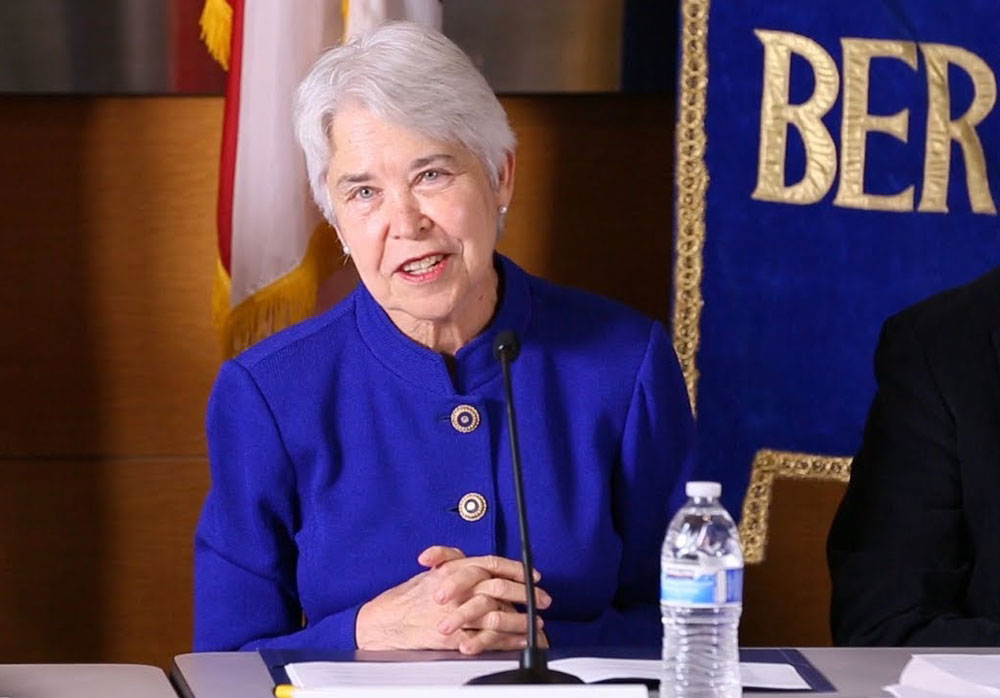
February 29, 2020; Los Angeles Times
The University of California (UC), Berkeley, wants to raise $6 billion to preserve its “heart and soul,” according to Chancellor Carol Christ, reports Teresa Watanabe in the Los Angeles Times.
One can hardly fault Christ for wanting to raise more money for the Berkeley campus—it’s central to her job, after all. According to Christ, the money raised would fund 100 new tenure-track faculty members, undergraduate scholarships, 300 new graduate student fellowships, affordable student housing, and research support.
“This is not a campaign about ‘nice to have,’” Christ said. “This is a campaign to raise money for the very core of the institution.”
And yet Christ’s statement about “heart and soul” begs the question of what the heart and soul of a public university is. As Watanabe reports, three decades ago, half of UC Berkeley’s funds came from the state. Today, that number stands at 14 percent.
In other words, is the “heart and soul” of Berkeley that of a public university or a private nonprofit?
Sign up for our free newsletters
Subscribe to NPQ's newsletters to have our top stories delivered directly to your inbox.
By signing up, you agree to our privacy policy and terms of use, and to receive messages from NPQ and our partners.
The irony is that if Christ succeeds, it is likely that its current 14-percent state contribution figure will continue to fall. How do we know this? Well, between 1990 and 1997, when Chang-Lin Tien was chancellor, the “heart and soul” of Berkeley was also very much at stake: 27 percent of senior faculty accepted early retirement over a period of four years and the total number of faculty was cut by 10 percent.
Tien, a much-beloved chancellor (and, as it happens, the first Asian American ever to head a major US public research university) is widely credited as enabling Berkeley to weather the storm, a task similar to the one that Christ has now taken on as her own. Under Tien’s leadership, Berkeley “broke all records for private gifts of the university,” raising a then unheard-of (for a public university) $780 million in six years.
Tien, as it happens, promoted Christ to provost during his tenure, so Christ was there, and she knows exactly the task that she now faces. What is the current state of the university? Well, in the past five years, the number of tenure-track faculty at Berkeley has fallen by two percent, while the number of Berkeley undergraduates have increased by 14 percent. Evidently, that means that student-faculty ratios are rising, threatening educational quality.
As we now know, Tien’s efforts at private fundraising (and securing more federal research grants) were successful, but success had a not-so-positive side effect, which was to begin the shift at UC Berkeley from being a public institution to more of a hybrid public-private institution. Between 1990 and 1995, the percentage of direct state support in Berkeley’s budget fell from 49 percent to 37 percent. The slide to today’s paltry level of 14 percent had begun. And successful fundraising allowed that slide to occur largely without political consequence. Of course, Berkeley was hardly unique in this—one can tell similar stories about flagship campuses across the country.
There was also a growing tuition barrier rising in the midst of all of this. Today, state residents attending UC Berkeley pay $14,254 a year. Back in 1990, the cost was $1,672 a year ($3,210 a year in inflation-adjusted dollars). In other words, the cost of a public higher education at Berkeley has increased fourfold for state residents.
At NPQ, we write from time to time about the importance of advocacy as a core competency. We don’t usually think about public universities when we do, but maybe we should. Because maybe it is there, in defending the publicness of the public university, where the true heart and soul of the public university will be found.—Steve Dubb













